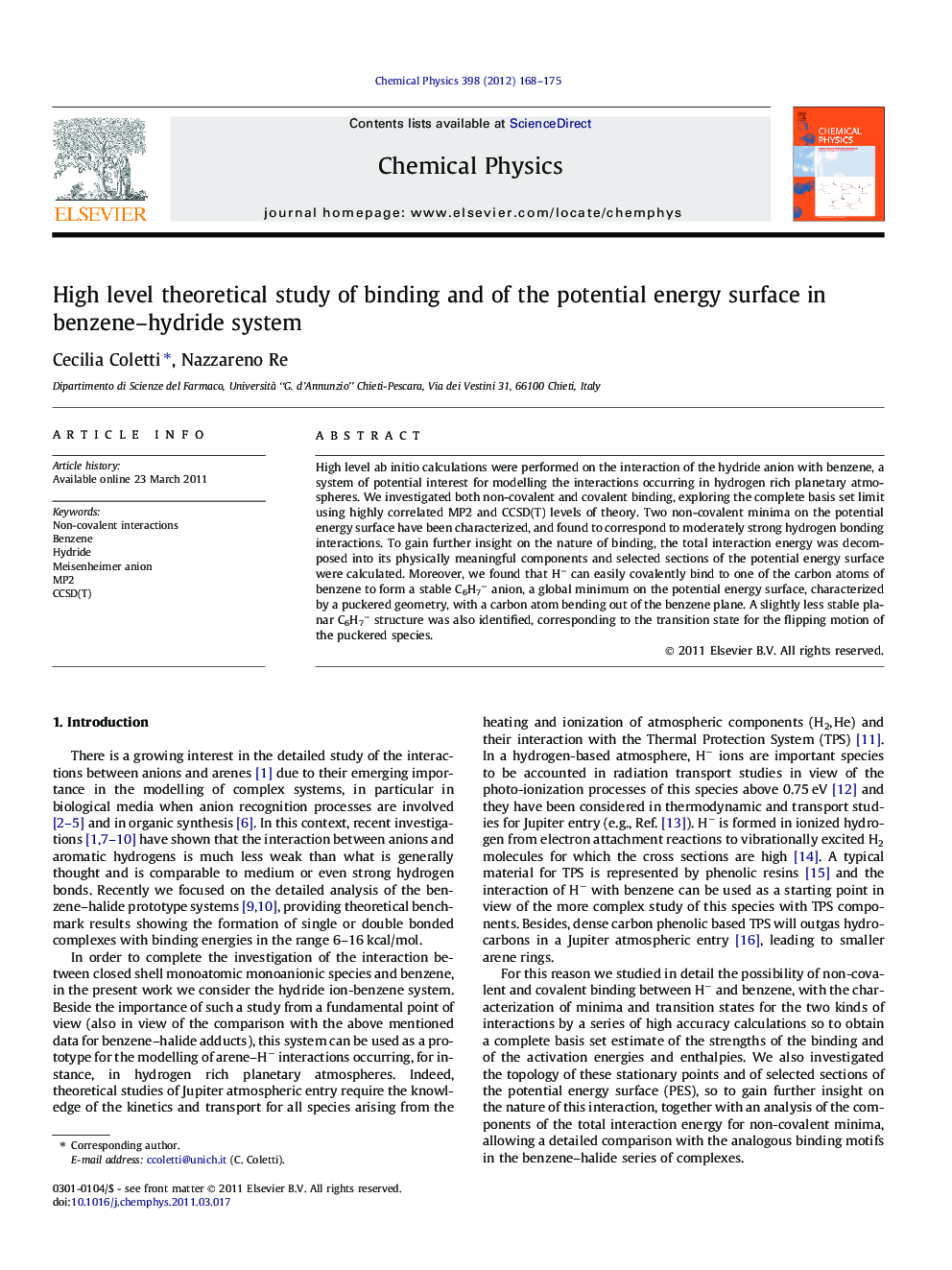| Article ID | Journal | Published Year | Pages | File Type |
|---|---|---|---|---|
| 5374433 | Chemical Physics | 2012 | 8 Pages |
High level ab initio calculations were performed on the interaction of the hydride anion with benzene, a system of potential interest for modelling the interactions occurring in hydrogen rich planetary atmospheres. We investigated both non-covalent and covalent binding, exploring the complete basis set limit using highly correlated MP2 and CCSD(T) levels of theory. Two non-covalent minima on the potential energy surface have been characterized, and found to correspond to moderately strong hydrogen bonding interactions. To gain further insight on the nature of binding, the total interaction energy was decomposed into its physically meaningful components and selected sections of the potential energy surface were calculated. Moreover, we found that Hâ can easily covalently bind to one of the carbon atoms of benzene to form a stable C6H7â anion, a global minimum on the potential energy surface, characterized by a puckered geometry, with a carbon atom bending out of the benzene plane. A slightly less stable planar C6H7â structure was also identified, corresponding to the transition state for the flipping motion of the puckered species.
Graphical abstractIn-plane minimum geometries for benzene-Hâ non-covalent adducts: linear adduct (left) with the hydride ion hydrogen bonded to one aromatic hydrogen; bifurcated adduct (right), with the hydride ion hydrogen bonded to two adjacent aromatic hydrogens.Download full-size imageHighlights⺠Theoretical study on covalent and non-covalent binding in benzene-hydride. ⺠Two non-covalent stable adducts were characterized in the in-plane geometry. ⺠Significant sections of the potential energy surface were determined. ⺠Formation of a very stable C6H7- anion upon covalent binding to carbon.
